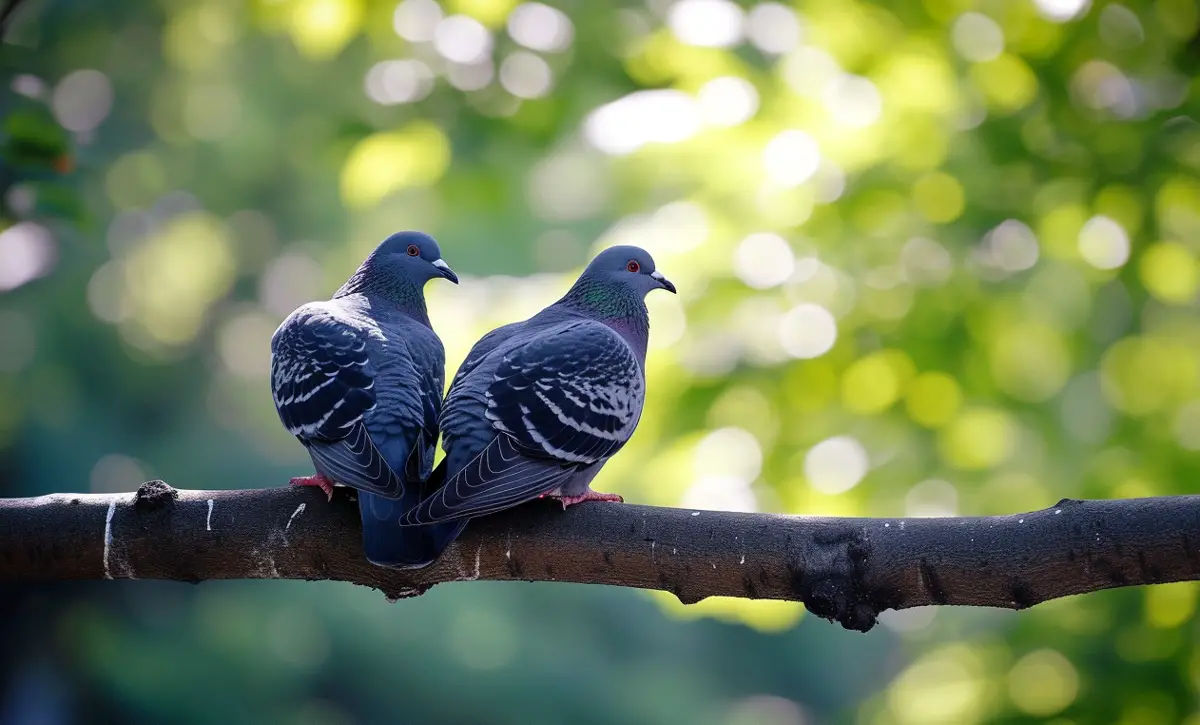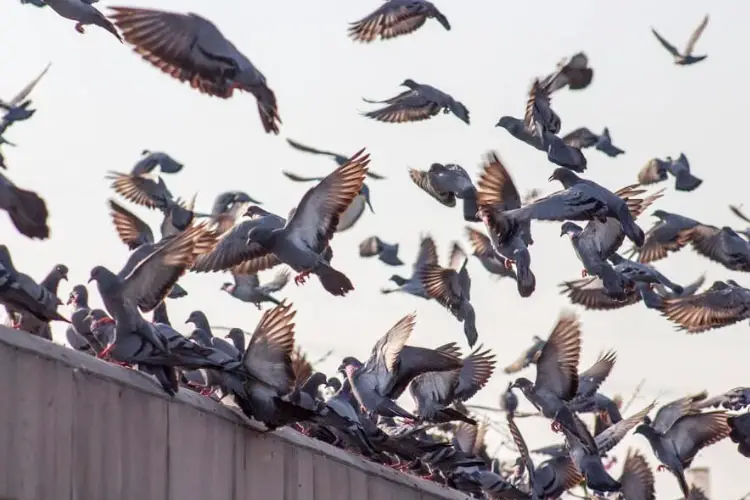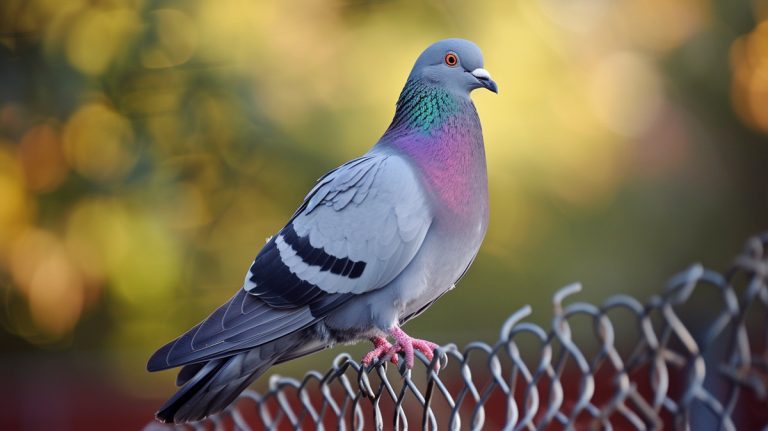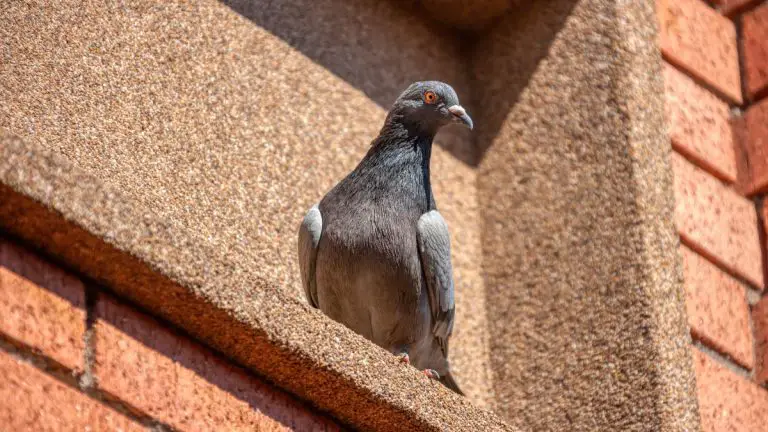Pigeon Origins: Exploring the Origins of Pigeons
Have you ever wondered where pigeons come from? These ubiquitous birds can be found in cities all around the world, perched on statues, buildings, and even our windowsills. But how did they become such a common sight in urban areas? In this article, I’ll dive into the origins of pigeons and uncover the fascinating story behind their presence in our cities.
Pigeons, also known as rock doves, have a long and storied history that dates back thousands of years. They were originally native to the cliffs and rocky outcrops of coastal regions, particularly in Europe, North Africa, and parts of Asia. However, due to their adaptability and ability to thrive in various environments, pigeons quickly spread to other parts of the world.
The domestication of pigeons by humans played a significant role in their widespread presence today. For centuries, people have bred pigeons for various purposes, including messenger services, food, and even as pets. This intentional breeding and selective breeding have led to the development of different pigeon breeds, each with its own unique characteristics.
In the next sections, we’ll explore the different ways pigeons have become intertwined with human history and how they have managed to colonize urban environments. So, let’s take a closer look at the fascinating journey of pigeons and discover the origins of these remarkable birds.
The Origins of Pigeons
Pigeons, also known as rock doves, have a fascinating history that stretches back thousands of years. They are native to coastal regions in Europe, North Africa, and parts of Asia. These areas provided the perfect environment for pigeons to thrive, with their rocky cliffs and plentiful supply of food.
But how did pigeons spread to other parts of the world? Well, their adaptability played a crucial role in their global colonization. Pigeons are highly resilient birds that can survive in a variety of environments, from bustling cities to rural areas. This adaptability allowed them to venture beyond their original habitats and explore new territories.

However, it wasn’t just their natural adaptability that led to their spread. Humans also played a significant role in the domestication and distribution of pigeons. Early humans recognized the unique qualities of pigeons and began selectively breeding them for different purposes.
One of the most notable ways in which pigeons have been bred is for messenger services. In ancient times, people trained pigeons to carry messages across long distances. These messenger pigeons were highly valued for their intelligence and ability to find their way back home.
Pigeons have also been bred for their culinary value. They have been a popular source of food in many cultures throughout history. Their meat is lean and flavorful, making them a desirable choice for meals.
Additionally, pigeons have been kept as pets and for their aesthetic appeal. Over time, selective breeding has led to the development of various pigeon breeds, each with its own unique traits and characteristics.
Today, pigeons can be found in urban environments worldwide. Their adaptability and close association with humans have allowed them to thrive in cities, where they can find food and shelter in abundance. Their ability to coexist with humans has made them a common sight in parks, plazas, and even on city rooftops.
As we delve deeper into the intertwined history of pigeons and humans, we will explore how these birds have not only adapted to urban environments but have also become an integral part of the urban ecosystem.
So, let’s continue our journey to discover the remarkable relationship between pigeons and humans in the next section.
Native Habitats of Pigeons
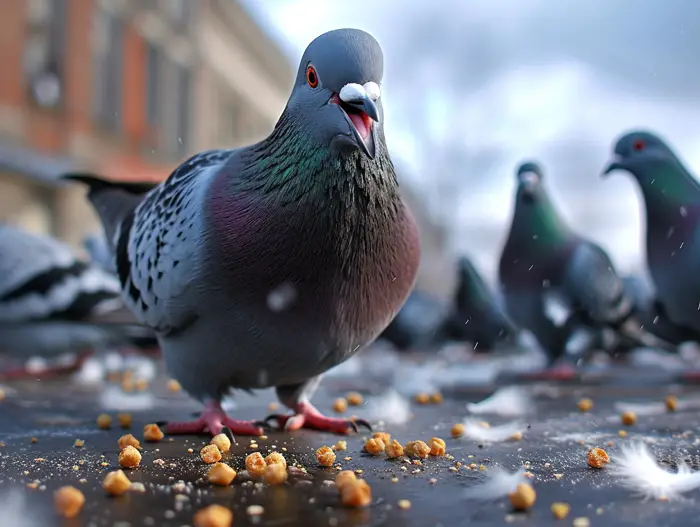
Pigeons are fascinating creatures that can be found in various habitats around the world. Let’s explore some of the native habitats where pigeons are commonly found.
- Urban Environments: Pigeons have a remarkable ability to adapt and thrive in urban settings. You can often spot them perched on buildings, bridges, or even in city parks. They have become well adapted to the presence of humans and have learned to utilize the resources available in urban areas.
- Forest and Woodlands: Pigeons are also found in forested regions and woodlands, particularly those with open spaces and ample food sources. These habitats provide pigeons with a diverse range of plants, seeds, and fruits to feed on.
- Coastal Areas: Pigeons have a strong association with coastal habitats. You can often see them near beaches, harbors, and cliffs. These habitats offer an abundance of food sources, including seaweed, fish, and shellfish.
- Grasslands and Fields: Pigeons are known to inhabit grassy areas and fields, where they can forage for grains, seeds, and insects. These open landscapes provide pigeons with ample space for feeding and nesting.
- Caves and Cliffs: Some pigeon species, such as the Rock Pigeon, are adapted to nesting in caves and cliffs. These natural formations provide safe and secure nesting sites, away from potential predators.
Pigeons have successfully adapted to a wide range of habitats, allowing them to thrive in diverse environments. Their ability to coexist with humans and take advantage of urban areas is particularly noteworthy.
So, whether you’re in the heart of a bustling city or exploring the peaceful countryside, keep an eye out for these remarkable birds. You never know where you might spot a pigeon, perched or gracefully taking flight.
The Spread of Pigeons
Pigeons are not only adaptable, but they also have an incredible ability to spread across different regions. Let me explain how these remarkable birds have made their way around the world.
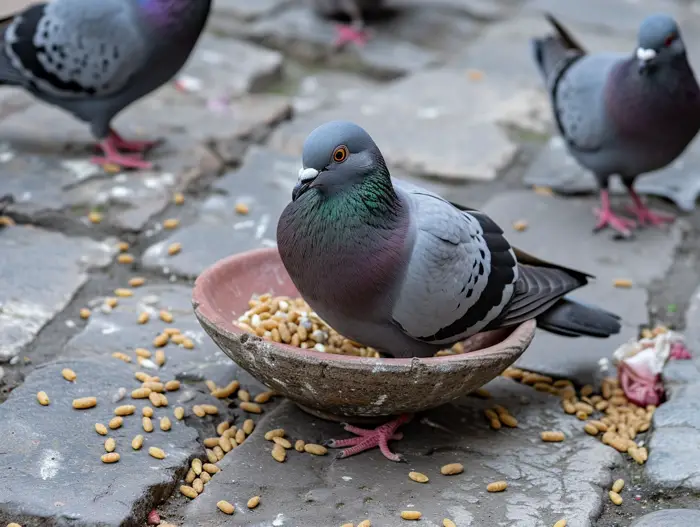
1. Historical Spread
Pigeons have a long history of coexistence with humans. They were originally domesticated in the Mediterranean region over 5,000 years ago. From there, they were selectively bred for various purposes, such as messenger birds and prized pets.
2. Human-Assisted Dispersal
As humans expanded their reach through exploration, trade, and colonization, pigeons were often taken along for the journey. The birds were highly valued for their homing ability, making them ideal messengers during times of war. This led to pigeons being introduced to new territories by sailors, soldiers, and travelers.
3. Urban Environments
With the rise of urbanization, pigeons found a new niche in city life. The abundance of food, shelter, and nesting sites provided by buildings and urban landscapes made cities an attractive habitat. Pigeons quickly adapted to the concrete jungles and became a familiar sight in city squares and parks around the world.
4. Natural Habitats
But pigeons are not limited to urban environments alone. These versatile birds can thrive in various habitats, including:
- Forests and woodlands
- Coastal areas
- Grasslands and fields
- Caves and cliffs
Their ability to survive and reproduce in such diverse natural environments is a testament to their adaptability.
5. Global Distribution
Today, pigeons can be found on every continent, except for Antarctica. They have successfully established populations in cities, towns, and rural areas alike. From bustling metropolises to remote islands, pigeons have spread their wings far and wide.
The spread of pigeons is a testament to their remarkable adaptability and close association with humans. From their humble beginnings in the Mediterranean region, these birds have traversed the globe, thriving in a range of environments. Whether you’re in a bustling city or a tranquil countryside, keep an eye out for these fascinating creatures.
Human Domestication of Pigeons
Pigeons, as we know them today, have a long history of coexistence with humans. They have been selectively bred for various purposes, leading to the diversity of pigeon breeds we see today. Let’s take a closer look at how pigeons were domesticated by humans.

Selective Breeding:
Over thousands of years, humans have selectively bred pigeons for specific traits, such as color, size, and behavior. This process involved choosing pigeons with desired characteristics and breeding them together. Through generations of careful selection, different breeds with distinct features emerged.
Pigeon Fanciers:
Human involvement in the domestication of pigeons also led to the development of pigeon fanciers. Pigeon fanciers are people who take great interest in breeding and showing off pigeons. They take pride in the unique features of their pigeon breeds and participate in various pigeon competitions.
Pigeon Races:
One fascinating aspect of pigeon domestication is the sport of pigeon racing. Pigeon racing involves releasing pigeons from a specific location and tracking their speed and distance as they return to their lofts. This sport originated in the 19th century and continues to be popular in many regions around the world.
Carrier Pigeons:
Another valuable contribution of human domestication of pigeons is the use of carrier pigeons. Throughout history, carrier pigeons were used as messengers to deliver important messages in various parts of the world. Their exceptional homing instincts and the ability to find their way back to their lofts made them indispensable for communication purposes.
The domestication of pigeons by humans has had a significant impact on their appearance, behavior, and utility. As pigeon fanciers continue to breed and develop new pigeon breeds, the diversity and adaptability of these birds only increase.
Now that we have explored the human domestication of pigeons, let’s delve into another interesting topic related to pigeons.
Pigeons in Urban Environments
As pigeons continue to adapt and thrive, they have found themselves right at home in urban environments. Let’s take a closer look at how these remarkable birds have made cities their own.

1. Urban Pigeon Habitats
Urban environments, with their concrete jungles and towering skyscrapers, may seem like an unlikely place for birds to flourish. However, pigeons have proven to be masters of adaptation. They have found niches in urban landscapes that provide them with food, shelter, and roosting spots. Rooftops, bridges, and ledges are just a few of the preferred nesting sites for these adaptable creatures.
2. Food Sources
One of the reasons pigeons thrive in cities is the abundance of food sources. They are opportunistic feeders, known to scavenge for food scraps left behind by humans. Parks, plazas, and outdoor dining areas become their feeding grounds, offering a smorgasbord of discarded fast-food meals and crumbs.
3. Reproduction
The urban environment also provides favorable conditions for pigeons to reproduce. Their ability to breed year-round coupled with the availability of nesting sites allows their populations to rapidly increase. Pigeons are skilled at finding hidden nooks and crannies to lay their eggs, ensuring the survival of their offspring.
4. Social Structure
Pigeons are highly social birds and thrive in large groups. Urban environments provide ample opportunities for pigeons to interact and establish hierarchies within their populations. City squares and plazas become meeting points for pigeons to engage in social behaviors such as courtship displays and territorial disputes.
5. City Commuters
In addition to their adaptability, pigeons’ homing instincts make them excellent city commuters. They have exceptional navigational skills, allowing them to navigate city streets and find their way back to their roosting sites. This ability has been harnessed by humans for centuries through the use of carrier pigeons.
Pigeons in urban environments have proven their ability to not only survive but thrive in the midst of bustling cities. Their adaptability, resourcefulness, and social nature have allowed them to carve out a comfortable niche for themselves. As we continue to coexist with these fascinating creatures, it is important to appreciate their resilience and the unique role they play in our urban ecosystems.
Conclusion
Pigeons are an incredibly adaptable and resilient species that have a long history of coexistence with humans. They have spread across different regions through human-assisted dispersal and have established populations on every continent except Antarctica. Pigeons have the ability to thrive in a variety of natural habitats and have also adapted to urban environments.
Through human domestication, pigeons have been selectively bred for specific traits, leading to the development of different breeds and the sport of pigeon racing. They have also been used as carrier pigeons for centuries, serving as messengers in times of war and communication.
In urban environments, pigeons have found their preferred nesting sites, food sources, and social structures. They have developed unique navigation skills to navigate city streets and have become an integral part of urban ecosystems.
Overall, pigeons are not only fascinating creatures but also serve as a reminder of the intricate relationship between humans and the natural world. Their adaptability, resilience, and unique role make them a truly remarkable species.
